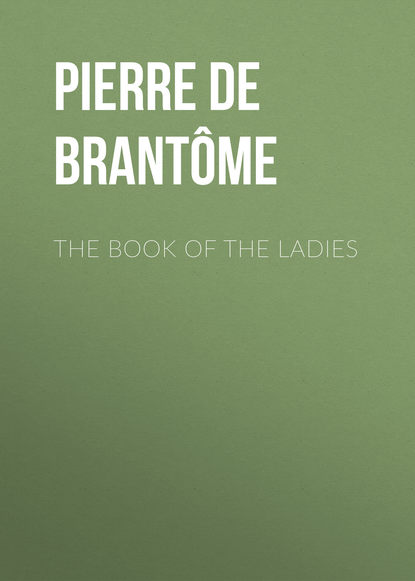По всем вопросам обращайтесь на: info@litportal.ru
(©) 2003-2024.
✖
The book of the ladies
Настройки чтения
Размер шрифта
Высота строк
Поля
In 1841 M. Genin published a volume of Queen Marguerite’s letters, and in the following year a volume of her letters addressed to François I.
Since then Comte H. de La Ferrière-Percy has made her the subject of an interesting “Study.” This careful investigator having discovered her book of expenses, kept by Frotté, Marguerite’s secretary, has developed from it a daily proof of the beneficent spirit and inexhaustible liberality of the good queen. The title of the book is: Marguerite d’Angoulême, sœur de François I
. Aubry: Paris, 1862.
The poems of François I., with other verses by his sister and mother, were published in 1847 by M. Aimé Champollion.
Notes to Sainte-Beuve’s Essay.
VII
(See page 262 (#pgepubid00020).)
The Ladies given in Discourse VII. appear under the head of “The Widows” in the volume of Les Dames Galantes, a very different book from the Livre des Dames, which is their rightful place. As Brantôme placed them under the title of Widows, he has naturally enlarged chiefly upon the period of their widowhood.
French editor.
notes
1
Taken chiefly from the Essays preceding the various editions of Brantôme’s works published in the 18th and 19th centuries; some of which are anonymous; the more recent being those of M. H. Vignaud and M. Henri Moland. – Tr.
2
See Appendix.
3
See Appendix.
4
Here follow the names of ninety-three ladies and sixty-six damoiselles; among the latter are “Mesdamoiselles Flammin (Fleming?) Veton (Seaton?) Beton (Beaton?) Leviston, escossoises.” The three first-named on the above list are the daughters of Henri II. and Catherine de’ Medici. – Tr.
5
Henri III. convoked the States-General at Blois in 1588; the Duc de Guise (Henri, le Balafré) was there assassinated, by the king’s order, December 23, 1588; his brother, Cardinal de Bourbon, the next day. – Tr.
6
Honoré de Balzac’s volume, in the Philosophical Series of his “Comedy of Human Life,” on Catherine de’ Medici, while called a romance, is really an admirable and carefully drawn historical portrait, and might be read to profit in connection with Brantôme’s account of her. – Tr.
7
See Appendix.
8
See Appendix.
9
See Appendix.
10
George Buchanan, historian and Scotch poet, who wrote libels and calumnies against Marie Stuart in prison. (French editor.)
11
She was the daughter of Henri II. and Catherine de’ Medici, married to Philip II., King of Spain, after the death of Queen Mary of England. – Tr.
12
Daughter of Henri II. and Catherine de’ Medici, – “La Reine Margot.” – Tr.
13
Brantôme’s words are gorgiasetés and gorgiasment; do they mark the introduction of ruffs around the neck, gorge? – Tr.
14
The Salic law: so called from being derived from the laws of the ancient Salian Franks, – according to Stormonth, Littré, and Cassell’s Cyclopædia. – Tr.
15
Marguerite was married to Henri, King of Navarre, six days before the massacre of Saint-Bartholomew, August, 1572.
16
Marguerite lived eighteen years in the castle of Usson, from 1587 to 1605. She died in Paris, March 27, 1615, at the age of sixty-two, rather less than one year after Brantôme. (French editor.)
17
It is noticeable in the course of this “Discourse” that Brantôme wrote it at one period, namely, about 1593 or 1594, and reviewed it at another, when Henri IV. was in full possession of the kingdom, but before the end of the century and before the divorce. (French editor.)
The passage to which the foregoing is a note is evidently an addition to the text. – Tr.
18
The story goes that she refused to answer at the marriage ceremony; on which her brother, Charles IX., put his hand behind her head and made her nod, which was taken for consent. In after years, the ground given for her divorce was that of being married against her will. The marriage took place on a stage erected before the west front of the cathedral of Notre-Dame; the King of Navarre being a Protestant, the service could not be performed in the church. It was here, in view of the assembled multitude, that Marguerite’s nod was forcibly given when she resolutely refused to answer. Following Brantôme’s delight in describing fine clothes, the wedding gown should be mentioned here. It was cloth of gold, the body so closely covered with pearls as to look like a cuirass; over this was a blue velvet mantle embroidered with fleurs-de-lys, nearly five yards long, which was borne by one hundred and twenty of the handsomest women in France. Her dark hair was loose and flowing, and was studded with diamond stars. The Duc de Guise, le Balafré, with his family connections and all his retainers, left Paris that morning, unable to bear the spectacle of the marriage. – Tr.
19
Meaning the daughters of the kings of France only. – Tr.
20





